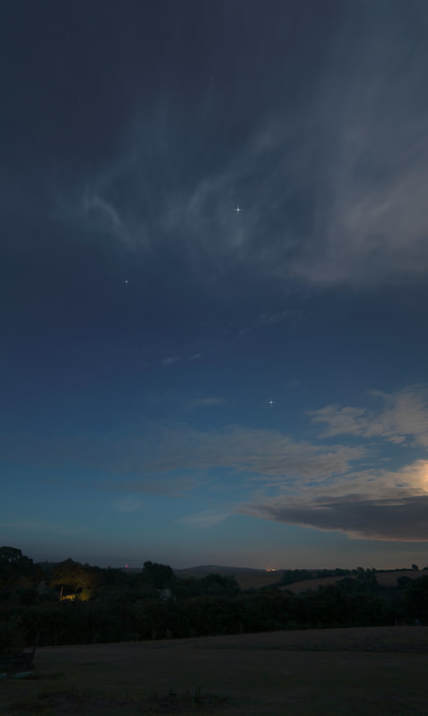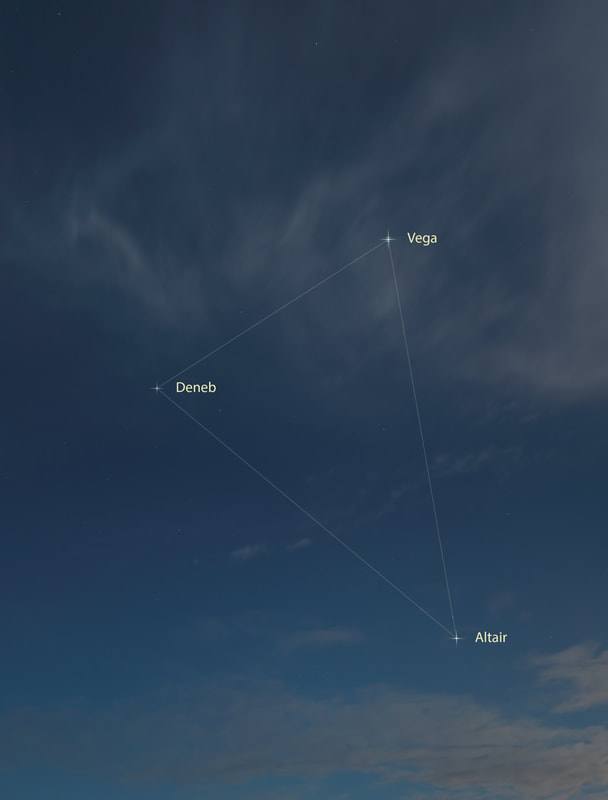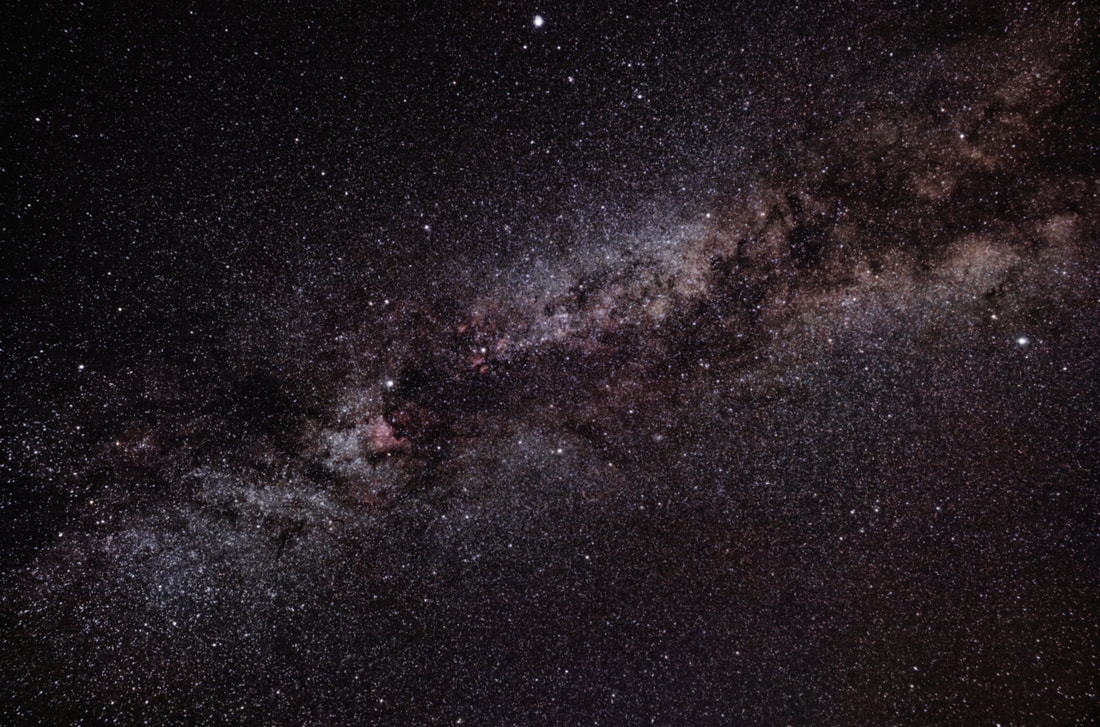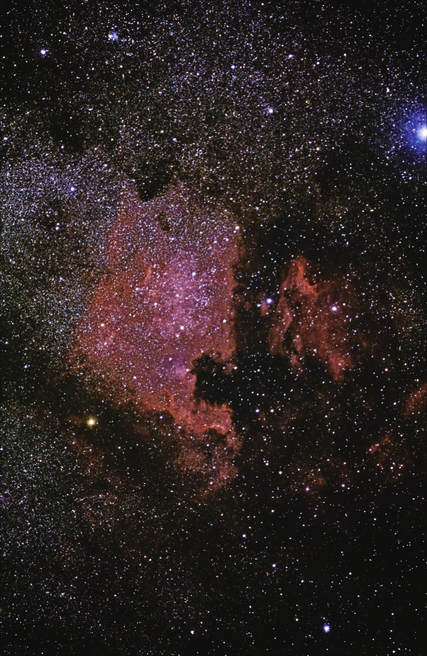Rising to the East at this time of year, the three stars of the Summer Triangle are bright enough to punch through twilight and even a little wispy cloud. To the naked eye they appear as three white/blue points of similar brightness, but this is deceptive. The two stars on the right of the image - Vega and Altair - are indeed quite similar. They are both A-class stars, more massive and more luminous than the Sun. As residents of our neighbourhood they are among the brightest in our sky. The most surprising thing about Vega and Altair is: they are not round. They aren't even close to spherical. The odd shape is caused by Vega's rapid rotation, about 50 times faster than the Sun - centrifugal forces make them bulge at the equator. If Vega was spinning a little faster it would begin to break up. As with most things there is a YouTube video to demonstrate this. While it isn't the most professional production to grace the internet (it's best watched muted), visual aids like this make the idea so much easier to grasp. (Planets aren't necessarily round either. In the case of a rocky planet like the Earth this is barely noticeable but the dwarf planet Haumea is thought to look something like this.) To understand why Vega is rotating so rapidly we need to consider how stars form, from collapsing molecular clouds of gas and dust. On average, this cloud will be spinning a little (the technical term is angular momentum). As the cloud shrinks rotation rate increases, as shown in this sober and serious scientific experiment. A class stars, such as Vega and Altair, formed from larger clouds of gas than our Sun, so can be expected to have higher rotation rates. (The least spherical star known is Archenar in the southern sky.) They are also younger stars than the Sun. A spinning top in the frictionless environment of space would whirl indefinitely, in the absence of other forces. However, stars lose mass as they age, part of their atmosphere is ejected in a stellar wind. The expelled gas interacts with the star's magnetic field, acting as a brake. As stars age they spin more slowly, measurements of the rotation rate can be used to estimate a star's age. Then there is the monster: Deneb. Visually, it is slightly dimmer than Vega and Altair and a similar colour (the size of the artificial diffraction spikes on the image above correspond to the visual magnitude). However, this is deceptive: Deneb is one of the most distant stars that can be easily seen, about 2,600 light years away. Vega is a mere 25 light years away and Altair is even closer. For Deneb to be visible at this enormous distance it must be fantastically luminous, perhaps 100,000 times as bright as the Sun. It pumps out enough energy to toast a marshmallow from 13,000,000,000 miles away - Pluto orbits the Sun at less than a third of this distance. A rocky planet that ventured too close would be melted and eventually vaporised. The are two reasons for Deneb's extreme luminosity. Firstly, it has about 19 times the mass of the Sun, the crushing gravity at its core increases the rate of the nuclear reactions that power it. (A star with twice the mass of the Sun would be toughly 11 times brighter.) Also, it has exhausted its primary fuel supply in its core, and is now burning hydrogen in a large shell around it. As a result it is burning fuel at a higher rate than earlier in its lifecycle, and is slowly expanding and evolving into a red supergiant. If placed in our solar system it would be large enough to swallow the Earth. This deeper image shows the innumerable stars of the Milky Way running through the Summer Triangle, Vega is at the top, Altair at the right and Deneb is left of centre. Below Deneb is a region with a distinctly red colour, the signature of an emission nebula or H II region.
0 Comments
Your comment will be posted after it is approved.
Leave a Reply. |
Archives
May 2020
Categories
All
|






 RSS Feed
RSS Feed